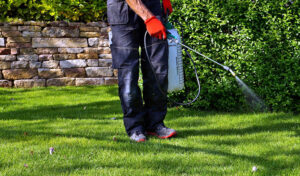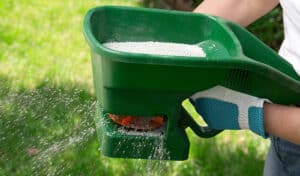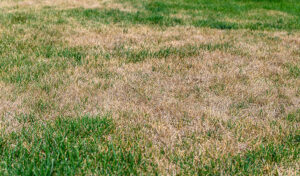When is it time to water? The first few warm days of spring does not automatically mean to water lawns. In fact, allowing lawns to start to go under mild drought stress actually increases rooting.
Watch for footprinting, or footprints remaining on the lawn after walking across it (instead of leaf blades bouncing back up). Grasses also tend to turn darker in color as they go under drought stress. Sampling the root zone soil could be another option.
Water as Infrequently as Possible.
Thoroughly water when you do water so moisture soaks down to the roots. Exceptions to this general rule would be for newly seeded lawns where the surface needs to stay moist, newly sodded lawns that have not yet rooted into the soil, or when summer patch disease is a problem. Otherwise, avoid frequent waterings that promote shallower root systems and weeds.
Water Early in the Day if Possible.
Given a choice, water early in the day when lawns are normally wet from dew. Avoid midday watering due to excessive evaporation, and at night due to potential increased chances of some diseases gaining a foothold. The exception to this guide is when you are in extremely hot weather and nighttime temperatures don’t go below 68 degrees. Then it is better to water in the late afternoon or early evening, providing you don’t have watering-time restrictions. Early or late in the day reduces the amount of evaporation that takes place during the very hot day, allowing more water to reach the root zone.
Spread The Water Uniformly Across The Lawn.
Sprinklers vary in distribution patterns and require spray overlap for uniform coverage. Placing coffee cans or similar straight-sided containers on the lawn can help measure water application rates. Avoid flooding areas, or missing other spots. On heavy clay soils and slopes, watch for excessive runoff; it may be necessary to apply the water in several applications to allow for adequate penetration.
Water Conservation.
To help conserve water, mow your lawn at a higher than normal height, avoid applying an excess of nitrogen as warm weather approaches, limit traffic over the lawn, improve turf rooting, control thatch and soil compaction, and avoid pesticide use on drought stressed lawns. Don’t allow water to hit the driveway or into the street. This is just wasteful.
Avoid Overwatering
Use a rain gauge to measure how much water you’re applying. Overwatering does more than deplete the water supply, it also makes plants prone to pests and adds to stormwater runoff, which pollutes our water systems. By choosing and operating a watering system correctly, you can reduce water bills, insect and disease problems, and maintenance requirements. For example, the more you water your lawn, the faster it grows and the more it needs to be mowed.






